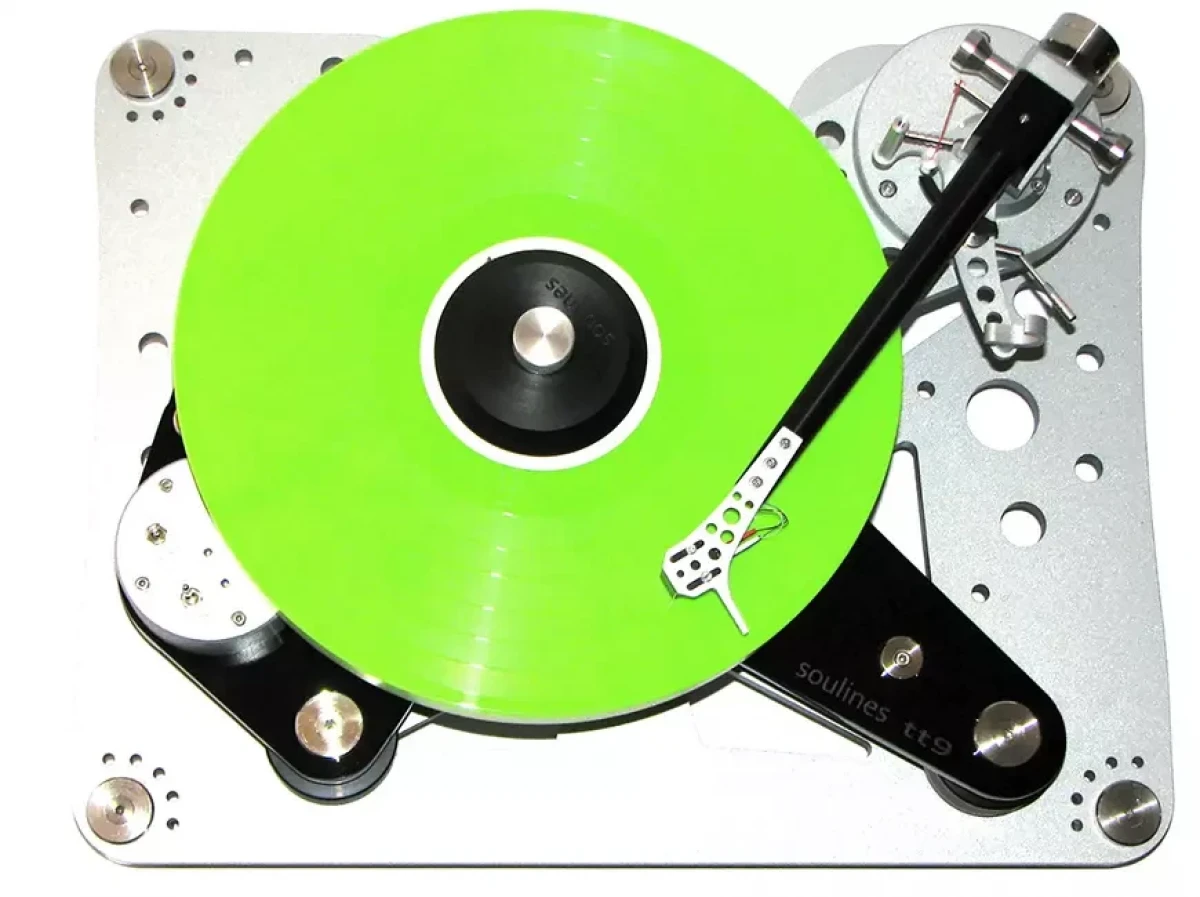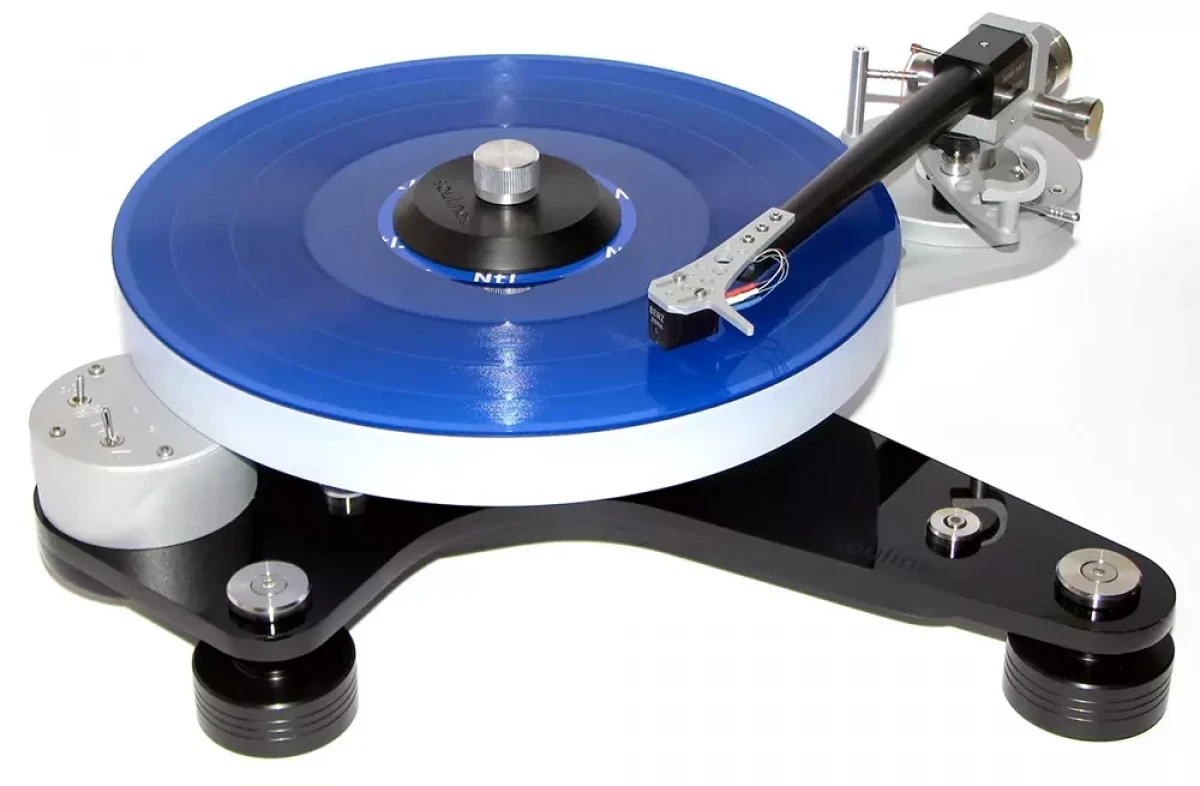
Soulines tt9 – a Turntable Designed Using the Fibonacci Sequence and the Golden Ratio
20.02.2025 08:07 | ~2 minutes read
Serbian company Soulines has unveiled the Soulines tt9 turntable, which borrows its technical solutions from the flagship Soulines tt42 model. Vibration control was a priority during development, and as a result, the design was calculated using the Fibonacci sequence and the golden ratio. As a result, the company promises minimal resonance and an open, natural sound.
Rather than looking at the components of a turntable separately, Soulines strives for perfect synergy, where all the parts work optimally together. To achieve this, each platter, bearing, and spindle are machined individually rather than produced in batches, with all aluminum parts CNC-machined from solid billets, and each component machined and inspected by hand.

The Soulines tt9's lightweight yet rigid chassis effectively resists resonance, while the inverted main bearing (made from stainless steel, brass and Delrin) ensures stable and quiet operation. The turntable's 30 mm thick, 2.5 kg acrylic platter features an LP "apple" recess, allowing records to lie perfectly flat, and a clamp is included for additional stability. The Soulines tt9's DC motor drive system features electronic speed control, while the robust aluminium plinth provide reliable vibration isolation and resonance control.
As an option for the tt9, Soulines offers the KiVi M3 unipivot tonearm, designed to minimise resonance and maximise groove tracking accuracy. The KiVi M3 features an integrated unipivot bearing, which combines low friction with added rigidity. A one-piece support fork and tonearm tube improves structural integrity, while a versatile counterweight system accommodates a wide range of components. In addition, Soulines offers a range of vibration control accessories, including BBS ball bearing decoupled feet and the U-Base, an aluminium and stainless steel isolation platform.

The recommended retail price of the Soulines tt9 turntable with the KiVi M3 tonearm (including acrylic dust cover and record clamp) is £3,990. The Soulines KiVi M3 tonearm is available separately for £2,090.
Specifications
This product is in the Hi-Fi and High End Electronics and Acoustics database
Turntables — Soulines tt9
Model name
tt9
Speed
33/45
Drive
Belt
Suspension
Fixed
Tonearm preinstalled
N/A
Tonearm model
KiVi M3 (optional
Cartridge preinstalled
N/A
Cartridge model
N/A
Platter
N/A
Motor
N/A
Wow and Flutter (%)
N/A
Signal to Noise (dB)
N/A
Rumble (-dB)
N/A
Dimensions (mm)
425 x 355 x 145
Weight (kg)
10
Official link
More content

Audio-Technica Hotaru – a Firefly Turntable
Japanese company Audio-Technica has announced the imminent opening of pre-orders for a limited edition of the innovative Audio-Technica Hotaru turntable (since May 30, 2025). The model will go on sale in October of this year at a price of $ 9,990 US - only 1000 turntables will be made.

PS Audio Introduced The Paul McGowan Signature Series
PS Audio has released a line of new components - The Paul McGowan Signature Series, which includes a preamp, DAC, disk transport and phonostage. All components feature innovative circuitry and offer impressive performance.

TAD-M2500TX – New Amplifier will be Available in Mid-April 2025
Technical Audio Devices Laboratories has introduced the TAD-M2500TX stereo power amplifier – the device sports a completely rethought circuit design, uses upgraded power transformers and a redesigned machined aluminum chassis (machined from a 90 kg solid block of aluminum).

JAVA HI-FI Carbon Double Shot – a Powerful Integrated Amplifier
A very powerful (2 x 400 W into 8 Ohm and 2 x 400 W into 4 Ohm loudspeakers) integrated amplifier JAVA HI-FI Carbon Double Shot is presented. The model uses a fully balanced dual-mono configuration with an LDR pre-amp stage and GaN FET power amp stage.

Revox B77 MK III Alice Cooper Edition - a Reel-to-Reel Tape Recorder for 27,000 Euros
Swiss audio manufacturer Revox releases reincarnations of its most famous reel-to-reel tape recorders, for example, the Revox B77 MK III. But today we are in for a truly impressive new product - the company presented the result of cooperation with Alice Cooper himself, the Revox B77 MK III Alice Cooper Edition. The model is released in a limited edition of 25 copies at a price of 27,000 euros.


